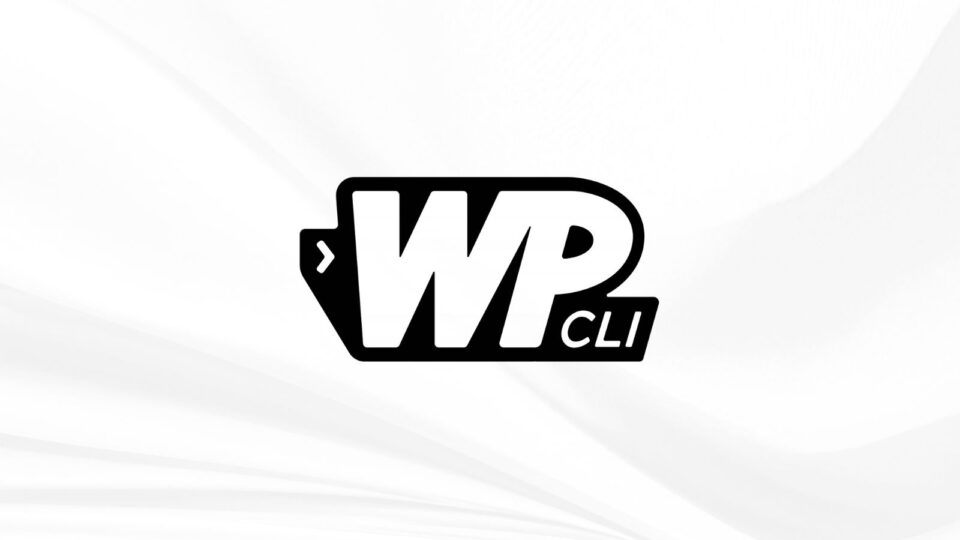I often manage WordPress websites through the WP CLI command line interface to save time navigating the web interface, saving time and making it easier to debug in case of errors.
I. Install WP-CLI
WP-CLI is usually pre-installed when you create WordPress through tools like Centminmod, Cyberpanel, Cloudpanel, etc. You can check by going to the WordPress installation directory and typing the command
wp info --allow-rootCode language: Nginx (nginx)If you don’t see any results, it means that your Server doesn’t have WP-CLI. In this case, install WP-CLI on your server using the following command
curl -O https://raw.githubusercontent.com/wp-cli/builds/gh-pages/phar/wp-cli.phar
php wp-cli.phar --info
chmod +x wp-cli.phar
sudo mv wp-cli.phar /usr/local/bin/wpCode language: Nginx (nginx)If you install WordPress via Docker, you need to add the wpcli declaration to the file. docker-compose.yml similar to below.
wpcli:
depends_on:
- db
- wordpress
image: wordpress:cli
entrypoint: wp
command: "--info"
env_file: .env
volumes:
- ./wordpress/html:/var/www/htmlCode language: YAML (yaml)You can refer to the example in the article on how to install WordPress using Caddy .
Below is a summary of commonly used WP CLI commands so that you can find them again in case you forget them.
II. Plugin Management
Show list of all available plugins
wp plugin listCode language: PHP (php)Show active plugins
wp plugin list --status=activeCode language: PHP (php)Show plugins with new updates available
wp plugin list | grep "available" | awk '{print $1}'
wp plugin list | grep "available" | awk '{print $1}' ORS=' ' Code language: Nginx (nginx)Install, activate, update, deactivate and delete new plugins, for example Advanced Custom Fields
wp plugin install advanced-custom-fields
wp plugin activate advanced-custom-fields
wp plugin update advanced-custom-fields
wp plugin deactivate advanced-custom-fields
wp plugin delete advanced-custom-fields
Code language: Nginx (nginx)Update all plugins
wp plugin update --allCode language: Nginx (nginx)III. Theme management
Show theme list
wp theme listCode language: PHP (php)Update theme, for example Kadence
wp theme update kadenceCode language: Nginx (nginx)IV. Database management
Backup database
wp db exportCode language: JavaScript (javascript)Restore database
wp db import Code language: JavaScript (javascript)Access the database CLI to type commands
wp db cliCode language: Nginx (nginx)V. Change website URL
This command is used when you need to create a staging site for the main website, change from domain A to domain B, or vice versa.
wp search-replace 'https://markknow.dev' 'https://markknow.com' --skip-columns=guidCode language: Nginx (nginx)VI. Using WP-CLI via Docker
In case of using WP-CLI via docker, the commands need to be changed to
docker-compose run --rm wpcli commandCode language: Dockerfile (dockerfile)Command example
wp plugin listCode language: PHP (php)should be replaced by
docker-compose run --rm wpcli wp plugin list --allow-rootCode language: Dockerfile (dockerfile)This command needs to be executed in the directory containing the file. docker-compose.yml WordPress setup.
There are many other WP-CLI commands, you can refer to them with the following command.
wp --helpCode language: Bash (bash)If my article provides useful information and knowledge to you, don’t hesitate to invite me for a beer to have more motivation to share more. Thank you!
Comment Policy: We truly value your comments and appreciate the time you take to share your thoughts and feedback with us.
Note: Comments that are identified as spam or purely promotional will be removed.
To enhance your commenting experience, consider creating a Gravatar account. By adding an avatar and using the same e-mail here, your comments will feature a unique and recognizable avatar, making it easier for other members to identify you.
Please use a valid e-mail address so you can receive notifications when your comments receive replies.
